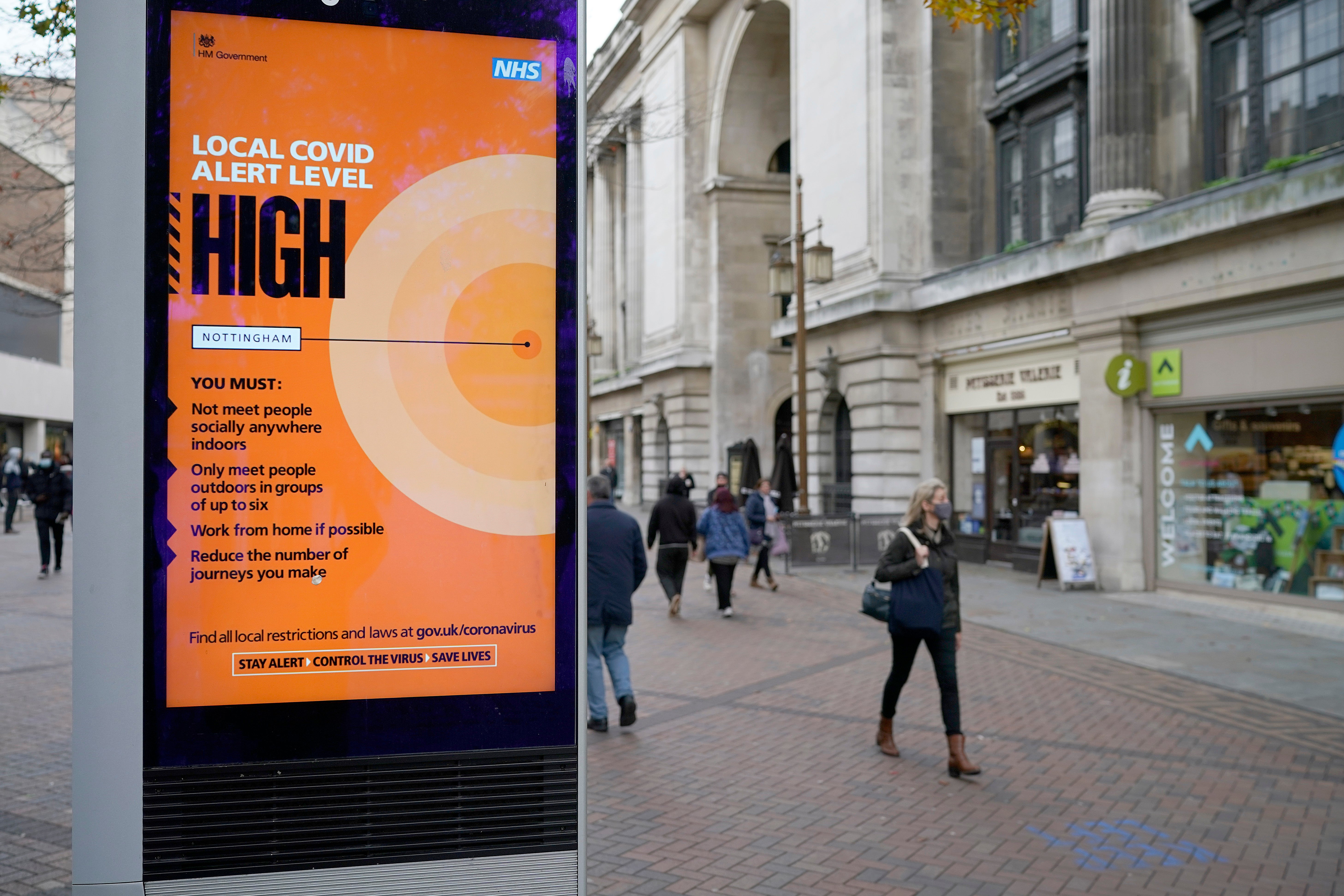Coronavirus: Nearly 100,000 getting infected each day in England as second wave at ‘critical stage’, warn scientists
Infections doubling every nine days amid ‘concerning’ trends in areas which previously had low infection rates

Your support helps us to tell the story
From reproductive rights to climate change to Big Tech, The Independent is on the ground when the story is developing. Whether it's investigating the financials of Elon Musk's pro-Trump PAC or producing our latest documentary, 'The A Word', which shines a light on the American women fighting for reproductive rights, we know how important it is to parse out the facts from the messaging.
At such a critical moment in US history, we need reporters on the ground. Your donation allows us to keep sending journalists to speak to both sides of the story.
The Independent is trusted by Americans across the entire political spectrum. And unlike many other quality news outlets, we choose not to lock Americans out of our reporting and analysis with paywalls. We believe quality journalism should be available to everyone, paid for by those who can afford it.
Your support makes all the difference.England’s coronavirus outbreak is reaching a “critical” stage with infections doubling every nine days, scientists have warned.
Researchers said there were “concerning” early signs that areas with previously low rates of infection were following trends observed in the country's worst-affected regions.
The latest findings from a major ongoing study on the spread of the virus suggest more “stringent” measures are needed “sooner rather than later”, experts said.
The interim data from round six of the Imperial College London’s React study estimated there were about 96,000 new infections a day between 16 and 25 October.
The research, commissioned by the Department for Health, used swab data from 86,000 people.
The overall prevalence of infection in the community in England was found to be 1.28 per cent, or 128 people per 10,000, an increase on the 60 per 10,000 observed in the previous round which took place between 18 September and 5 October.
Infections were found to be doubling approximately every nine days with a national reproduction number - or R number - estimated at 1.56, compared to 1.16 in the previous round.
“The co-occurrence of high prevalence and rapid growth means that the second wave of the epidemic in England has now reached a critical stage,” the study warned.
“Whether via regional or national measures, it is now time-critical to control the virus and turn R below one if further hospital admissions and deaths from Covid-19 are to be avoided.”
The government has so far resisted calls for a new national lockdown but is likely to face pressure for further action after France and Germany announced new sweeping new restrictions in a bid to stem rising infections.
The React study suggests the R number could be above 2.0 in the southeast, east of England, London and the southwest - although it placed a greater degree of uncertainty on these figures.
The prevalence of infection was found to be highest in Yorkshire and the Humber at 2.72 per cent, up from 0.84 per cent. In the northwest it was at 2.27 per cent, up from 1.21 per cent, and lowest in the east of England at 0.55 per cent, up from 0.29 per cent.
While prevalence grew across all age groups, the most pronounced increase was among those aged 55-64 at 1.20 per cent, up from 0.37 per cent.
Professor Paul Elliott, director of the programme at Imperial from the School of Public Health, said: “I think we were disappointed to see that actually we were still in this rapid growth phase - except, as we say, in the northeast where there does seem to have been a turn down, but it’s still growing.”
He added: “It’s more critical, because it’s gone up more and it’s continuing to go up.
“And also we’re seeing this increase in the rate of rise, rather than decrease in the rate of rise which we did spot before.
“So there was a period when the rate of rise was decreasing, and we were hopeful that the policies that have been implemented were turning the rates down and ultimately turning the prevalence down.
“But what we see this time is an increase in the rate of rise and not only a high prevalence in the north, increasing rapidly increasing prevalence in the south.”
Steven Riley, professor of infectious disease dynamics, Imperial College London, said: "If we are going to consider at some point over the winter that we may have to do something much more stringent, then it becomes a question of time.
"I think these results do argue for something sooner rather than later."
The study comes as it emerged 10 per cent of the UK’s population could be routinely checked for the virus under the government’s mass-testing operation dubbed Operation Moonshot.
The Guardian reported 30-minute saliva kits could be used to achieve rapid results in proposals put forward by NHS Test and Trace.
Meanwhile, the government is said to be hopeful a German-backed vaccine developed by Pfizer could be ready before Christmas, with The Times reporting Westminster had already purchased enough doses for 20 million people.


Join our commenting forum
Join thought-provoking conversations, follow other Independent readers and see their replies
Comments